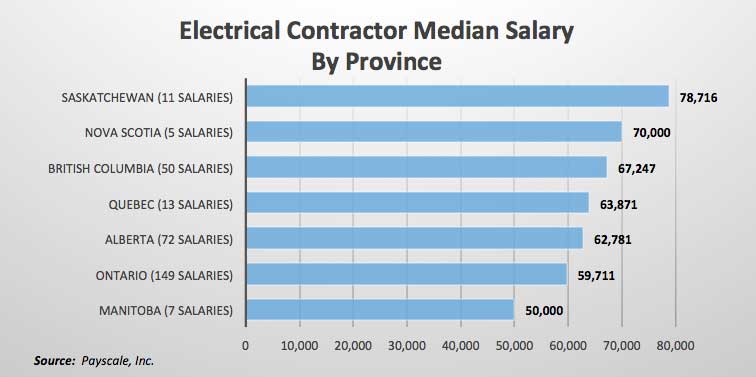Guide to the Canadian Electrical Code, Part 1[i], 26th Edition– A Road Map: Section 8

March 11, 2024
By William (Bill) Burr[i]
The Code is a comprehensive document. Sometimes, it can seem daunting to quickly find the information you need. This series of articles provides a guide to help users find their way through this critical document. This is not intended to replace the notes in Appendix B, or the explanations of individual requirements contained in the CEC Handbook but will hopefully provide some help in navigating the Code.

Section 8 – Circuit Loading and Demand Factors
(The 26th Edition of the Canadian Electrical Code, Part 1 (CSA C21-1:24) will be published and available in March 2024. To pre-order a copy go to https://www.csagroup.org/store/. This discussion of Section 8 is based on this edition)
Scope
Rule 8-000 outlines the Scope and provides the information you need to select:
- maximum circuit loading,
- calculated loads for consumer’s services, feeders and branch circuits,
- use of demand factors,
- branch circuit positions required for dwelling units; and
- heater receptacles for vehicles.
This is done in coordination with Sections 4 – Conductors, Section 6 – Services and service equipment and Section 14 – Protection and Control.
Rule 8-002, outlines the special terminology used in this section and includes:
- Basic Load – only lighting and receptacle circuits based on the dimensions of specific building occupancy as listed in Table 14,
- Calculated load – the load calculated in accordance with the rules in this section;
- Demonstrated Load – the historical demand wattage information recorded over 24 months for the same type of facility;
- Control of electric vehicle supply equipment loads – the process of connecting, disconnecting, increasing, or reducing electric power to electric vehicle supply equipment loads; and
- Electric Vehicle Energy Management System – a means of controlling electric vehicle supply equipment loads comprised of any of the following: a monitor(s), communications equipment, a controller(s), a timer(s) and other applicable device(s).
General
In this section, Rules 8-100 to 8-110 outline the methods of calculating current, voltage drop, maximum circuit loading, use of demand factors, number of branch circuit positions and determination of areas.
It lists standard voltage divisors: 120, 208, 240, 277, 347, 416, 480, or 600. These voltages are the divisors used with the total load which is expressed in watts (W) or volt amperes (V·A). to be used when calculating:
- currents from watts or volt-amperes in low voltage systems;
- maximum allowable voltage drop in installations;
- maximum circuit loading based on the overcurrent device used; and
- the calculated load.
You will also find here the factors for determining a continuous, cyclic, or intermittent load, and how these affect the selection of conductors and equipment.
Rule 8-104 outlines the calculation of maximum circuit loading.
- The calculated load in a consumer’s service, feeder, or branch circuit is a
continuous load unless in normal operation it will not persist for
- a total of more than 1 h in any 2 h period if the load does not exceed 225 A: or
- a total of more than 3 h in any 6 h period if the load exceeds 225 A.
An exception to this Subrule is identified in Subrules 8-200 3) and 8-202 2) inthat loads installed in a single dwelling or a dwelling unit in an apartment building are non-continuous in nature. However, the house loads (equipment located outside the dwelling units) are considered to be continuous loads. House loads are to be calculated with the applicable demand factors as permitted by the other rules in this Section.
- Where a fused switch or circuit breaker is marked for continuous operation at 100% of the ampere rating of its overcurrent devices, the calculated continuous load must not exceed:
- the continuous operation marking on the fused switch or circuit breaker,
- 100% of the ampacities of conductors, or
- 85% of the ampacities of single conductors selected in accordance with Section 4.
- Where a fused switch or circuit breaker is marked for continuous operation at 80% of the ampere rating of its overcurrent devices, the calculated continuous load must not exceed:
- the continuous operation marking on the fused switch or circuit breaker,
- 80% of the ampacities of conductors, or
- 70% of the ampacities of single conductors selected in accordance with Section 4.
- Fused switches and circuit breakers not marked as suitable for continuous operation at either 80% or 100% of their overcurrent devices rating are suitable for continuous operation at 80%.
- Note that Section 8 is a general section of the Code. When the Rules in the individual Sections supplement or amend those in the general Sections, they take precedence over the Rules in the general Sections. Where Subrule 8-104 6) requires that the continuous calculated load not exceed 80% of the rating of the overcurrent devices, other Code Sections may allow higher values, (for example Section 42 on welders or Section 62 on fixed resistance heating loads).
Rule 8-106, outlines the use of demand factors where:
- the size required for conductors and switches is not available in a standard size,
- two or more loads are installed, but only one can be used at a time, the one providing the greatest demand shall be used in determining the calculated demand.
- interlocks are installed to prevent simultaneous operation of electric space heating and air conditioning loads, whichever is the greater load is used in calculating the demand.
- loads of a cyclic nature are installed such that the maximum load cannot be supplied at one time.
- additional loads are added to an existing service or feeder, Subrule 8-106(8) permits the load to be calculated by adding the sum of the additional loads to the maximum existing demand load measured over 12 months.
- other demand factors can be based on demonstrated load calculations made by a qualified person, as determined by the Authority Having Jurisdiction.
- electric vehicle supply equipment loads are controlled by an Electric Vehicle Energy Management System, and
- an Electric Vehicle Energy Management System performs the functions of monitoring the consumer’s service feeders and branch circuits and controlling the electric vehicle supply equipment loads in accordance with Rule 8-500, the demand load for the electric vehicle supply equipment is not required to be considered in the determination of the calculated load.
Rule 8-108 providesanother function of this section and outlines the number of branch circuit positions needed for dwelling units. This is based on the ampacity of the service and whether a central electric furnace is intended.
Panelboards in dwelling units and single dwellings are required to be provided with additional space to add overcurrent devices for future expansion.
- For single dwellings, at least four additional spaces must be left for future overcurrent devices with provision for a two-pole device.
- For each dwelling unit in a multi dwelling building at least four additional spaces with provision for a two-pole device must be left.
Rule 8-110 states that the living areas designated in Rules 8-200 and 8-202 are determined from inside dimensions and include the sum of 100% of the area on the ground floor, 100% of any areas above the ground floor used for living purposes; and 75% of the area below the ground floor that exceed 1.8 m in height, from the lowest part of the ceiling assembly to the ground below it.
Calculated Load for Services and feeders
Rules 8-200 to 8-210 outline the methods of calculating the minimum ampacity of service or feeder conductors for various types of occupancies. Although, the various options and conditions may seem complicated, methodically working through the demand factors for each type of occupancy will allow you to determine the correct ampacity for service or feeder conductors.
The methods for determining demand factors for dwelling units are divided into:
- Single dwellings, and
- Apartment and similar buildings.
For single dwellings, you are given two options depending on the size of the dwelling:
- In the first option where the living area of the dwelling exceeds 90 m2 the basic load is 5000w and additional loads are added with various demand factors as listed in Subrules 8-200 1) a) ii to vii).
- The second option is to use a basic load of 24,000 watts if the floor area is 80m2 or more or 14,400 watts if the floor area is less than 80 m2. Note that rule 8-110 designates how to determine the living area.
For two or more dwelling units of row houses the calculated load for the consumer’s service or feeder conductors is based on:
- the calculated demand factors for each single dwelling, excluding electric vehicle supply equipment loads, described in Subrule 8-202 1),
- electric space heating and air-conditioning loads, plus
- the demand factors outlined in Subrule 8-202 3) a).
For apartments and similar buildings, the minimum ampacity of service or feeder conductors from a main service is calculated according to Subrules 8-202 3) b) to e)
As with single dwellings and row houses above, the basic load is based on living area plus the demand factors for various other loads as outlined in Subrules 8-202 (1to 4).
There are specific rules for determining the ampacity of service or feeder conductors for:
- Schools Rule 8-204,
- Hospitals Rule 8-206, and
- Hotels, motels, dormitories, and buildings of similar occupancy Rule 8-208.
For other occupancies, as listed in Table 14, the calculations are in Rule 8-210.
One other consideration is for exit, emergency and show window lighting where the loads may be spread throughout the building. Exit and emergency lighting demand is determined by connected load. In the case of show window lighting demand is based on 650W/m measured along the base of the windows.
Branch Circuits
Rule 8-300 provides demand loads for branch circuits supplying electric ranges and cooking units.
Rule 8-302 specifies that branch circuits supplying data processing equipment be considered continuous loads.
Rule 8-304 outlines that the maximum number of outlets per any 2-wire circuit is:
- 12 – for a 15 A branch circuit where the fused switch or circuit breaker is marked for continuous operation at 80%,
- 15 – for a 15 A branch circuit where the fused switch or circuit breaker is marked for continuous operation at 100%,
- 16 – for a 20 A branch circuit where the fused switch or circuit breaker is marked for continuous operation at 80%,
- 20 – for a 20 A branch circuit where the fused switch or circuit breaker is marked for continuous operation at 100%, and further specifies determining the counting of outlets based on
- the number of receptacles,
- the continuous operation marking on the overcurrent device protecting the circuit, and,
- the length of fixed multi-outlet assemblies.
The CEC Handbook CSA C22.1HB:24, available from the CSA Store https://www.csagroup.org/store/ provides examples of load and demand factor calculations.
Heater Receptacles for Vehicles Powered by Flammable or Combustible Fuels
Rule 8-400 provides guidance for the number and loading of branch circuits for heater receptacles for vehicles powered by flammable or combustible fuelsgenerally, and where the loading on each receptacle is controlled or restricted.
Electric Vehicle Energy Management systems
Rule 8-500 specifies that Electric Vehicle Energy Management Systems are permitted to monitor electrical loads and control electric vehicle supply equipment loads, but not cause the load of branch circuits, feeders, or services to exceed the requirements of Rules 8-104 5) or 6) and may control electrical power remotely.
In the next installment we will look at Section 10 – Grounding and Bonding.
[i] William (Bill) Burr is an associate member of the Canadian Electrical Code, Part 1, Technical Committee and formerly Chair of the Canadian Advisory Council on Electrical Safety (CACES), Chief Electrical and Elevator Inspector for the Province of BC & the Northwest Territories, Director of Electrical and Gas Standards Development and Director of Conformity Assessment at CSA Group. Bill can be reached at Burr and Associates Consulting billburr@gmail.com..
[i] Source: CSA C22.1:21, Canadian Electrical Code, Part 1 – Safety Standard for Electrical Installations. © 2021 Canadian Standards Association. With the permission of CSA Group, the material is reproduced from CSA Group standard CSA C22.1:21, Canadian Electrical Code, Part 1 – Safety Standard for Electrical Installations. This material is not the complete and official position of CSA Group on the referenced subject, which is represented solely by the Standard in its entirety. While use of the material has been authorized, CSA Group is not responsible for the manner in which the data are presented, nor for any representations and interpretations. No further reproduction is permitted. For more information or to purchase standard(s) from CSA Group, please visit Store – CSA Group or call 1-800-463-6727.
















